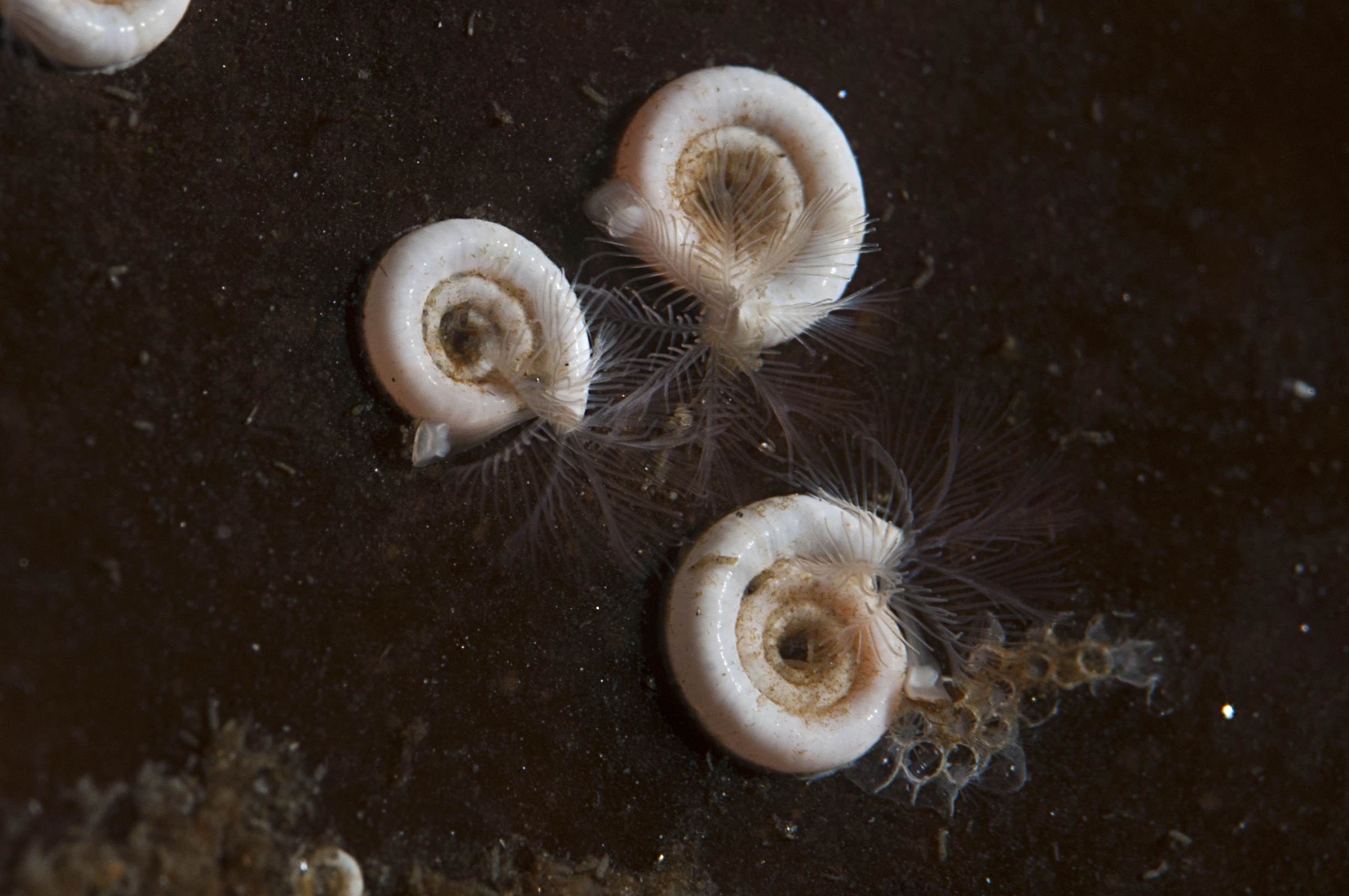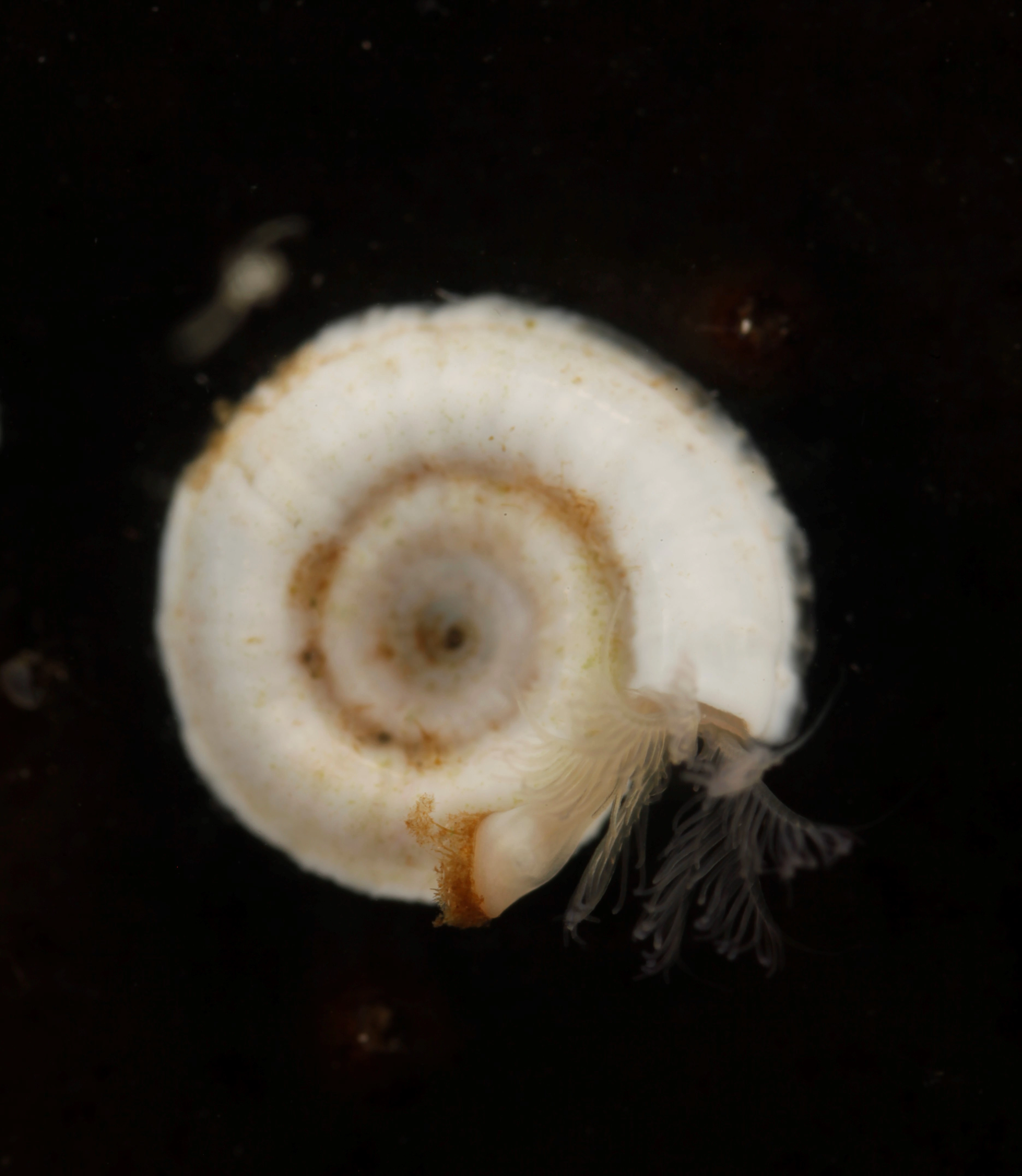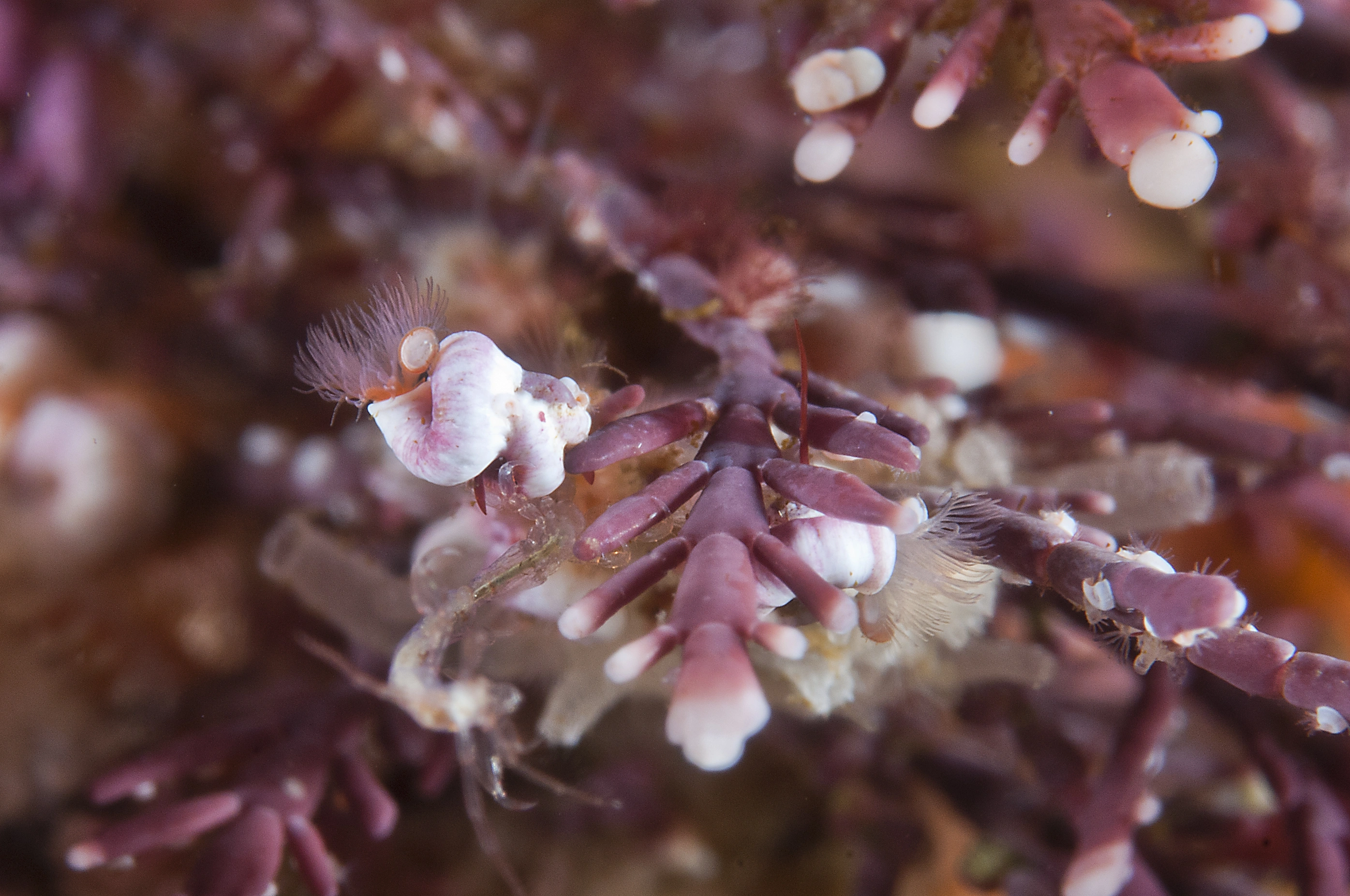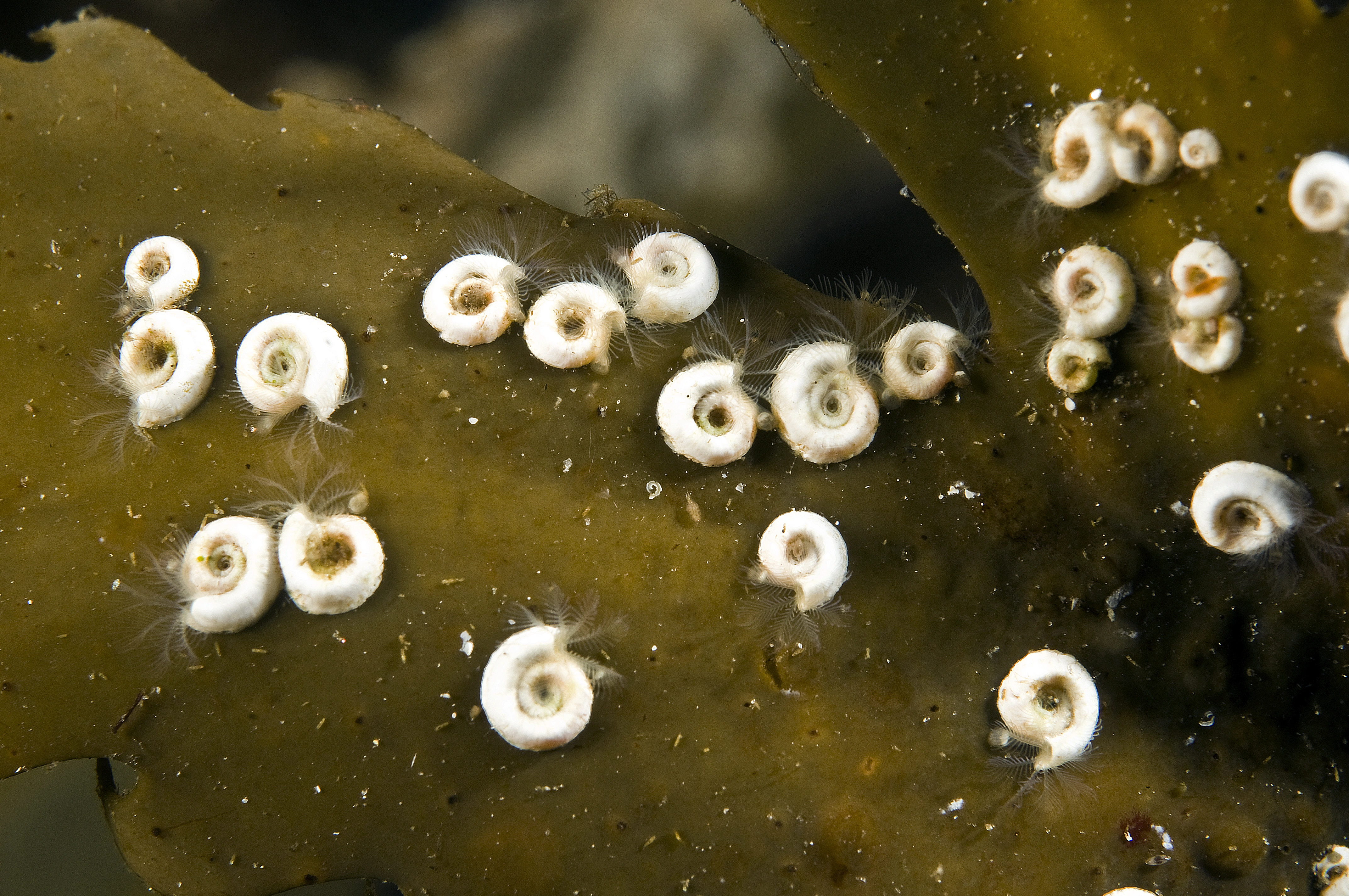Spirorbis inornatus
Spirorbis inornatus
This small species is one of the most common and abundant annelids in subtidal hard bottom samples in Norway, and in the Northeast Atlantic in general, as an epibiont of algae, especially kelp species.
- Innhold
- Measurements
- Characteristics
- Look-alikes
- Biology, ecology and behaviour
- Habitat
- Recommended citation
Measurements
Spirorbis inornatus
The tube is 2–3 mm of diameter. The individuals have 23–28 segments.
Characteristics
Spirorbis inornatus is easily distinguished from other spirorbins mainly by the tube and operculum morphology. The tube is opaque without ornamentations and has a number of whorls forming a flat spiral, or slightly concave due to a more elevated last whorl. The turn of the spire is sinistral, that is the tube is enlarged following a clockwise rotation. The crown bears 4 pairs of radioles and the operculum is concave. Thorax is composed of three segments, followed by a long achaetous region and the abdominal region that has 20 to 25 segments. The general colour of the body is orange-brown with the posterior part of the animal being lighter.
Look-alikes
Spirorbis species all seem superficially similar. Spirorbis corallinae, also present in Norwegian waters, is commonly found with the calcareous red algae Corallina sp. and looks alike S. inornatus. Both species are not only discriminated by the algae species they live on, but they are generally distinguished by the shape of the tube, being smaller in S. corallinae (up to 1.5 mm in diameter) and also with a more concave spiral. Spirorbis spirorbis is also very common in Norwegian waters but typically found on brown algae Fucus spp., in calm intertidal environments.
Spirorbis corallinae
Biology, ecology and behaviour
Some of the populations seem to choose for settlement not only specific algae, but also special parts of the thallus. The eggs are brown and are incubated in the tube.
Habitat
This species is very abundant on brown algae, especially on Laminaria spp.
Spirorbis inornatus
Recommended citation
Capa M. Spirorbis inornatus L'Hardy & Quievreux, 1962. www.artsdatabanken.no/Pages/313096. Downloaded <year-month-day>.



